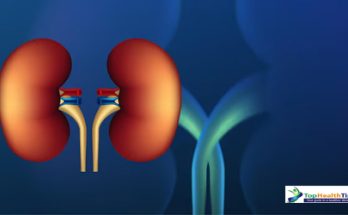Belly fat is more than just a nuisance that makes your clothes feel tight. It’s a dangerous type of fat called visceral fat that surrounds vital organs like the liver and intestines, leading to significant health risks. This article breaks down the science behind belly fat—its causes, consequences, and effective strategies for reducing it.
Types of Belly Fat
There are two main types of fat in the abdominal region:
- Subcutaneous Fat: This lies just beneath the skin and is soft to the touch.
- Visceral Fat: This fat is deep within the abdomen and surrounds important organs. It’s the more harmful type of belly fat associated with several health risks, including cardiovascular disease and type 2 diabetes .

Causes of Belly Fat
Several factors contribute to the accumulation of belly fat, many of which are lifestyle-related but can also be influenced by genetics and hormones.
1. Poor Diet
A diet high in sugars, refined carbohydrates, and unhealthy fats promotes the storage of fat in the abdomen. Foods like sugary drinks, fast foods, and processed snacks increase calorie intake without providing essential nutrients, encouraging fat deposition.
- Sugary Beverages: Drinks high in fructose cause increased fat storage in the abdominal area .
- Trans Fats: These fats, commonly found in processed foods, lead to an increase in visceral fat .
2. Lack of Physical Activity
Sedentary lifestyles contribute to fat gain. When the body doesn’t expend energy, it stores the excess calories as fat, particularly in the abdominal region.
- Regular physical activity boosts metabolism and prevents visceral fat accumulation .
3. Stress
Chronic stress causes the release of the hormone cortisol, which promotes fat storage around the belly. High cortisol levels are linked to an increase in visceral fat, making stress management crucial in belly fat reduction .
4. Sleep Deprivation
Inadequate sleep leads to hormonal imbalances, increasing hunger hormones like ghrelin and decreasing satiety hormones like leptin. This combination results in overeating and weight gain, particularly in the abdominal area .
5. Hormonal Changes
For women, hormonal shifts—especially during menopause—can lead to belly fat accumulation. The decline in estrogen affects fat distribution, causing more fat to be stored in the abdomen .
6. Genetics
Genetics play a role in determining where fat is stored, and some individuals are predisposed to store fat in their midsection .
Health Consequences of Belly Fat
Excessive belly fat, especially visceral fat, is linked to several serious health conditions.
1. Cardiovascular Disease
Visceral fat increases inflammation and insulin resistance, both of which elevate the risk of heart disease. Studies have shown that individuals with higher amounts of visceral fat are more likely to experience heart attacks and strokes .
2. Type 2 Diabetes
Visceral fat impairs the body’s ability to regulate blood sugar, leading to insulin resistance, a key factor in the development of type 2 diabetes. Even individuals with a normal weight but high belly fat are at risk .
3. Cancer
Research has linked visceral fat to a higher risk of certain cancers, including breast cancer and colorectal cancer. The inflammatory environment created by excess visceral fat may play a role in promoting cancerous cell growth .
4. Respiratory Problems
Excess belly fat can compress the diaphragm, making it harder to breathe, especially during physical activity. This leads to a reduction in lung function, which can exacerbate conditions like asthma .
5. Liver Disease
Visceral fat is closely linked to non-alcoholic fatty liver disease (NAFLD), a condition in which excess fat builds up in the liver. NAFLD can lead to liver inflammation, fibrosis, and even liver failure .

Science-Backed Solutions for Reducing Belly Fat
Reducing belly fat requires a combination of lifestyle changes, including dietary adjustments, regular physical activity, stress management, and adequate sleep. Here’s what science recommends:
1. Eat a Balanced Diet
- Increase Fiber: Soluble fiber helps reduce visceral fat by promoting fullness and improving digestion. Foods like flaxseeds, legumes, and whole grains are excellent sources .
- Avoid Sugary Foods and Drinks: Limit foods high in added sugars, especially sugary beverages. Studies show that excess fructose consumption leads to fat accumulation, particularly in the belly .
- Incorporate Healthy Fats: Omega-3 fatty acids found in fish, chia seeds, and walnuts help reduce inflammation and visceral fat .
2. Exercise Regularly
- Cardio Workouts: Aerobic exercises such as running, cycling, and swimming are effective for burning fat, particularly visceral fat .
- Strength Training: Building muscle through resistance training increases metabolism, helping to reduce belly fat over time .
- HIIT (High-Intensity Interval Training): This type of exercise has been shown to reduce belly fat more effectively than steady-state cardio .
3. Manage Stress
- Practice Relaxation Techniques: Mindfulness meditation, yoga, and deep breathing exercises can help reduce cortisol levels and prevent stress-related fat gain .
4. Get Enough Sleep
- Aim for 7–9 hours of sleep per night to regulate hunger hormones and prevent overeating. Studies have shown that people who get sufficient sleep are less likely to gain visceral fat .
5. Limit Alcohol Consumption
- Excessive alcohol intake leads to fat storage in the abdominal area. Reducing alcohol consumption helps in managing belly fat .

Interactive Tools to Help You Reduce Belly Fat
To make your journey toward reducing belly fat more engaging and measurable, consider using the following tools:
Waist-to-Hip Ratio Calculator
This tool helps assess whether you’re carrying excess visceral fat. A waist-to-hip ratio of more than 0.85 for women and 0.90 for men indicates an unhealthy distribution of fat.
Calorie Tracker Apps
Use apps like MyFitnessPal or Cronometer to track your daily calorie intake and ensure you’re consuming fewer calories than you burn, which is essential for fat loss.
Step Counter
Regular movement throughout the day is critical. Aim for at least 10,000 steps daily, which helps boost metabolism and burn fat.
Conclusion
Belly fat, especially visceral fat, is a serious health risk that requires attention. By understanding the causes and consequences of abdominal fat, you can adopt science-based strategies such as a healthy diet, regular exercise, stress management, and sufficient sleep to reduce it. Consistency is key in achieving long-term success, and utilizing tools like calorie trackers and waist-to-hip calculators can keep you motivated. Start your journey today for a healthier, slimmer you!
Related posts for Diseases & Remedy>>>
References
- National Institutes of Health. Visceral Fat and Cardiovascular Health. PubMed.
- Harvard T.H. Chan School of Public Health. Abdominal Fat and Chronic Disease.
- Bray, G. A., & Popkin, B. M. (2014). Dietary Sugars and Body Weight. The American Journal of Clinical Nutrition.
- Mayo Clinic. Belly Fat in Women: Taking It Off.
- Tremblay, A., & Chaput, J. (2012). Physical Activity and Visceral Fat. International Journal of Obesity.
- Epel, E. S., et al. (2000). Stress and Body Fat Distribution. Obesity Reviews.
- Knutson, K. L., & Van Cauter, E. (2008). Sleep and Hormones. The Lancet.
- Lovejoy, J. C. (2003). The Menopause and Obesity. Menopause.
- Fox, C. S., et al. (2007). Genetic Factors and Abdominal Fat. Journal of the American Medical Association.
- Després, J.-P. (2001). Health Consequences of Visceral Obesity. The Journal of Clinical Endocrinology & Metabolism.




